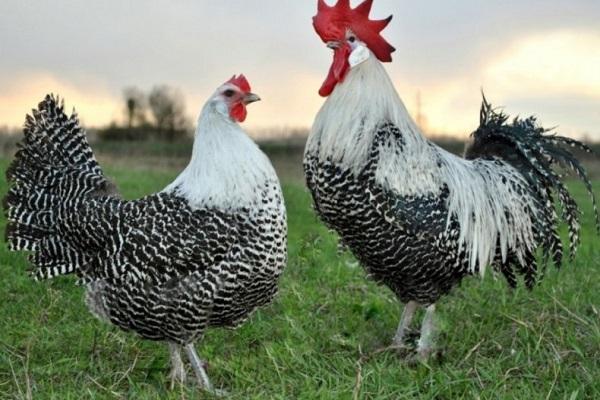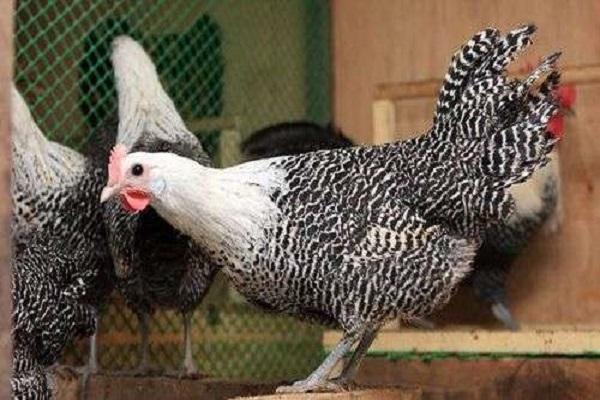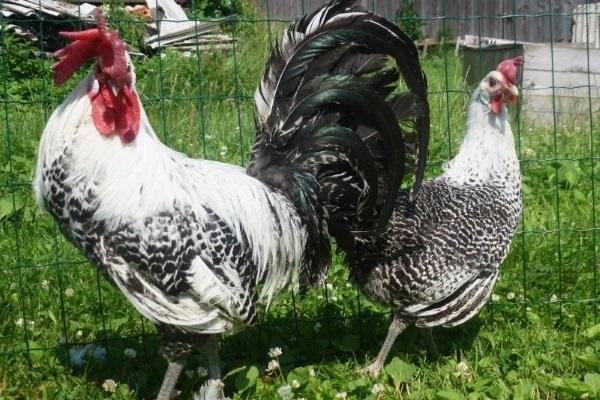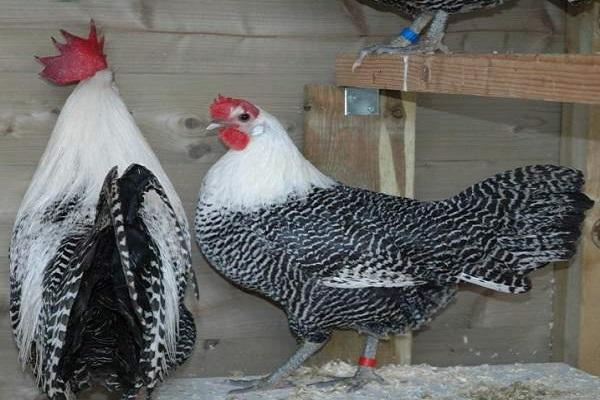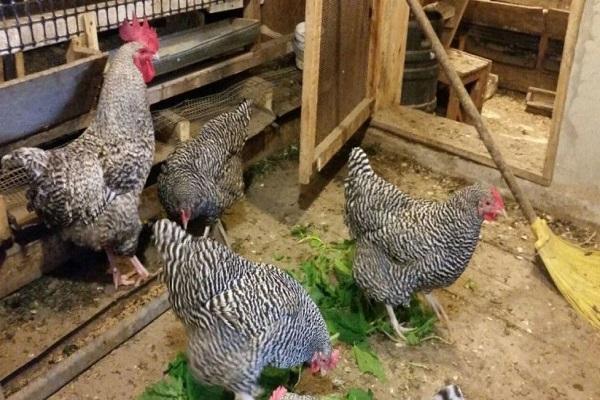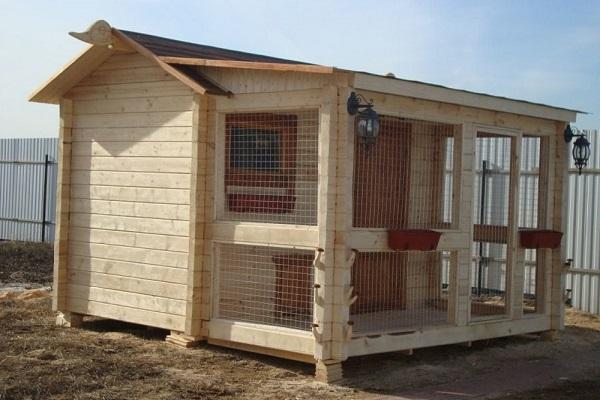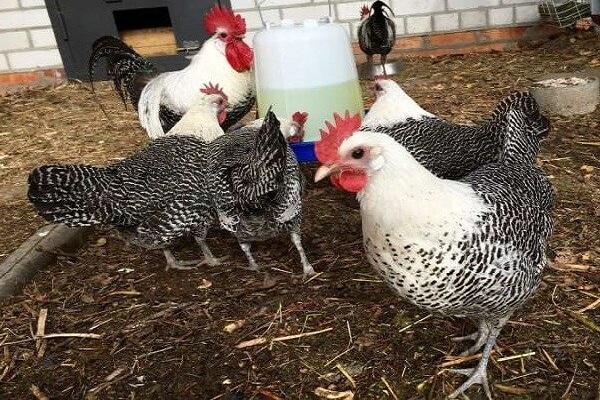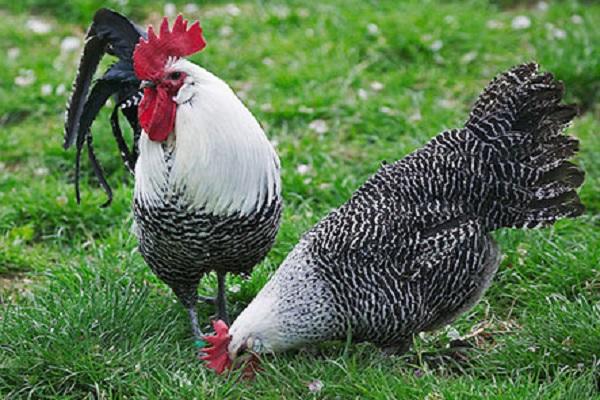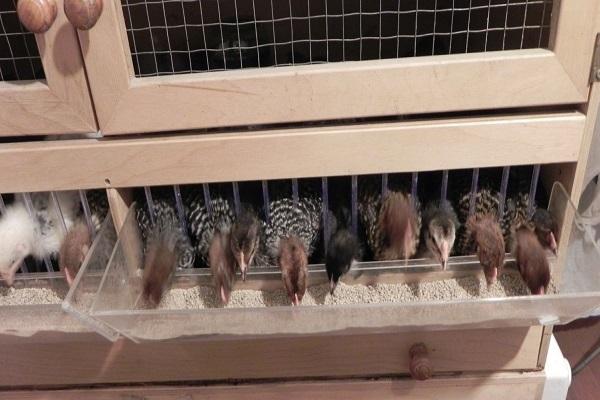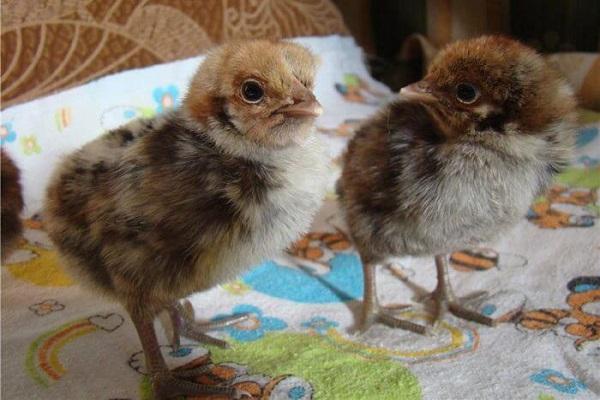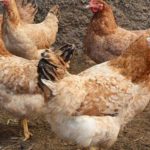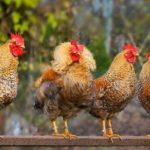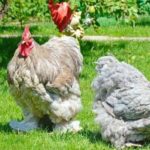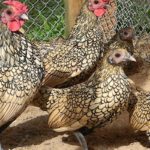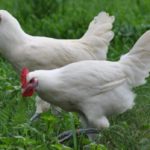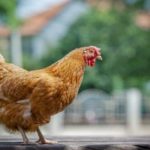Dietary chicken meat and eggs are necessary for humans, but of high quality. It is not without reason that breeders and farmers choose chicken breeds that would produce products with excellent taste. But the decorative nature of Brekel chickens also plays an important role in the popularity of the breed among farmers.
- History of appearance
- Description of the Brekel breed
- Birds exterior
- The difference between a rooster and a chicken
- Hatching instinct
- Productivity
- Temperament
- Advantages and disadvantages of the breed
- Conditions and care
- Poultry house requirements
- Walking janitor
- Installation of feeders and drinkers
- Shedding season
- Herd replacement
- Diet
- Adult birds
- Chickens
- Features of reproduction
- Frequent illnesses
History of appearance
The origin of the breed goes back to the distant past.The first specimens of bird hybrids appeared more than fifty years ago. The breed was developed by crossing aboriginal chickens with Belgian peasants.
But already in the 19th century, lovers of the breed even founded their own club. This is how the official standard for purebred birds was developed. Production declined in the first decade of the 20th century, almost leading to the destruction of the elite bird. But the hybrid was revived, which led to an increase in the number of individuals.
Due to the fact that the chickens bred are based on the native chicken of Belgium, the breed is classified as a Belgian species. They are valued for their eggs with a snow-white and even shell.
Description of the Brekel breed
Although the Belgian Breckel has been replaced by other types of crosses, the breed remains at the peak of popularity. And the point here is not only in excellent egg production, but also in the decorative appearance of poultry.
Birds exterior
The peculiarity of chickens is that, despite their small stature, they can boast of:
- well-developed wings, tightly fitting to the body;
- a squat, horizontally set body, where the chest is convex and the stomach is developed;
- a raised tail, under which the ends of the flight feathers are hidden;
- short, densely feathered neck;
- gray paws, underdeveloped shins;
- a small head with a comb and a wide forehead;
- a strong and sharp beak, having a gray-blue color with a transition to light colors towards the tip.
The color of the bird is interesting. Chickens are born with black plumage and golden fluff on top. Adults have silvery or golden colored feathers.
The silver Brekel has snow-white feathers on its head, neck, and upper back. There are rare inclusions of black on the white. But on the sides and chest, the stripes of black and white resemble a sailor suit.
Golden Brekels have dark and light red stripes predominating.
Other colors of the breed include lemon, blue, and white gold.
The difference between a rooster and a chicken
You can distinguish a female from a male in a purebred bird, as in all chicken breeds, by:
- Comb. In cockerels it is larger, with 5-6 petals and stands up straight. In addition, long earrings adorn the head. In chickens, the rounded comb is tilted to the side.
- The size and shape of the tail. Males boast abundant tail feathers that hang beautifully in braids. It is enough for chickens to have a small fan of feathers behind them.
- Masse. Roosters are larger and more muscular than graceful, fragile hens.
- Plumage on the neck. The “collar” of males is more magnificent and voluminous. Chickens have a smooth neck, with feathers pressed to the skin.
Even with an inexperienced eye, you can determine in the Brekel breed where the rooster is and where the hen is.
Hatching instinct
Hybrid chickens do not have maternal feelings, therefore, having laid eggs, they do not strive to sit on them to breed offspring. The Belgian Breckel lacks instinct, so it is necessary to place a hen of another purebred breed on the eggs. An incubator is used to produce offspring.
Productivity
It is worth raising purebred chickens, since from the Brekel bird you can get:
- eggs with a smooth, snow-white shell, up to 220 eggs per year with an average weight of 50-60 grams each;
- delicious meat with tender brisket weighing 2.2-3 kilograms.
It is worth noting that hens begin laying eggs at 5 months, reaching maturity at 4 months.
The bird gains maximum weight by 8-12 months of life.
Temperament
In a chicken flock, roosters are calm and rarely show arrogance. But they can attack the enemy if they feel a threat to their family. It is difficult for the bird to get along with other breeds of laying hens.
Belgian chickens are chatty and curious.The bird breed is prone to an active lifestyle and flying, which requires special maintenance.
Birds treat humans calmly if they are treated kindly.
Advantages and disadvantages of the breed
Before purchasing crosses for cultivation, you need to know all the advantages of a purebred bird. Brekel chickens can be distinguished by:
- high egg production rate;
- deli meat;
- stability of egg production;
- decorative appearance;
- unpretentiousness in care.
The disadvantages include the fact that hens do not have the instinct to lay eggs. The bird will treat humans aggressively if the owner is rude to the pets.
Conditions and care
Active Brekel chickens need special living conditions. Birds should not be locked in cages. Crowding and lack of freedom are contraindicated for her.
Poultry house requirements
A chicken coop is built to keep hybrids, taking into account the required area for 2 individuals per square meter. To fly, active individuals need a ceiling height of 2 meters or higher. Don't forget about the sloping roof with gutters.
The house must be warm so that the air temperature in the room does not fall below 15 degrees. Before the onset of cold weather, check the house for cracks. The walls are insulated so that the room is not blown through. A layer of straw is used to insulate the floor, mixing it with sawdust or peat. To create dryness in the chicken coop, it is better to make the floor with a slope, then excess moisture will drain into one place where it can be easily removed.
To ensure constant ventilation, an air vent with a restriction valve is installed. It is better if a canopy is attached to the main room. Then you can constantly ventilate the house.
Chickens love to sit on perches and perches, so they need to be arranged in large numbers and of different lengths.
For laying eggs, a special place is set aside in the form of an open cabinet with shelves.
Constant lighting will increase the duration of laying eggs by Belgian chickens. Within 12-14 hours, chickens need light, preferably infrared type.
Walking janitor
With the proper arrangement of a walking yard, you can release Brekel birds there at temperatures below 5 degrees below zero.
Choose a place for walking on the south side of the chicken coop. The house has manholes with ladders for birds to fly out. They open in the summer in the morning. Fence the courtyard area with a net, and it is better to cover the top with a roof so that the chickens can hide from the rain. It is necessary to monitor the dryness of the litter in the yard in the fall and spring. And in the summer, grass should grow in the walking area for the birds to feast on.
Installation of feeders and drinkers
The feeding area for purebred crosses is equipped with feeders and drinkers that stand on the floor. They must be washed daily. At the same time, the litter is removed as it gets dirty, but always once every 5-6 days. Bowls with pebbles and shells are placed nearby.
An ash box is needed to protect chickens from parasites. It is filled with sand mixed with wood ash.
Shedding season
Brekel chickens stop laying eggs during molting. When replacing old feathers with new ones, you need to ensure that the bird:
- received plenty of vitamins and nutrients;
- was not hypothermic;
- didn't get hurt;
- was protected from aggressive neighbors.
Human attention will allow chickens to survive a difficult period.
Herd replacement
The advantages of the Brekel breed include the fact that hens retain egg production for 3-4 years.Only then do they begin to replace old crosses with young ones. Chickens are used for meat, which is eaten. It is delicate and has a peculiar aftertaste.
Diet
The hybrid breed of poultry is fed 3 times a day at the same hours. It is necessary to create a menu that combines nutritional elements with vitamins.
Adult birds
From 1.5-2 months, chickens are transferred to an adult diet, in which the following are among the permitted products:
- wheat or bran;
- barley, oats;
- corn, peas;
- sunflower meal;
- vegetables;
- meadow grass, nettles;
- whey.
A wet mash of grain and mixed feed in the form of granules is prepared for every day in the morning. The lunch menu includes a mixture of boiled potatoes, carrots, peas, nettles, and clover. In the evening, dry food is desirable. It includes grain and grass.
The daily diet for purebred chickens includes shell or chalk, meat and bone meal, not forgetting table salt. In summer they provide fresh grass.
It is advisable to prepare green brooms for birds' food for the winter, adding chopped herbs to the feed mixtures. Replace greens in cold weather with cabbage and Jerusalem artichoke.
Chickens
Brekel chicks that are born are given semolina with a boiled egg. Add low-fat cottage cheese, yeast, meat and bone meal to the diet. Young animals need to be fed 4 times a day. Be sure to add ascorbic acid to food.
Features of reproduction
The disadvantage of the Brekel chicken breed is that the females cannot be laid on eggs. The mutation occurring in the hybrids deprived the birds of their parental instinct. Therefore, to increase the number of animals, you will have to use an incubator.
Large specimens of eggs that were laid no more than 5-6 days ago are selected for laying.
The devices keep eggs for up to 20 days. Pecking occurs on the 21st-22nd day. For the first 5 days, the chickens are in the incubator, where they dry out. They are then selected, leaving the viable ones.
You can place eggs from Brekel hens on other hens to hatch offspring.
Frequent illnesses
Infections such as salmonellosis, bronchitis, smallpox occur when poultry is not properly cared for or chickens are not kept in compliance with standards. At 2 months of age, young animals must be vaccinated to avoid diseases.
Females of the breed suffer from salpingitis, an inflammation of the oviduct as a result of early puberty. When an egg passes through the narrow canal of a young laying hen, tissue injury occurs. The bird begins to get fat and stops laying eggs.
Prevention of disease in birds is to delay the onset of egg laying by artificial means. To do this, reduce daylight hours and provide food with a low calorie content. For adult chickens, it is important to give vitamin complexes and complete food on time. Inflammation will not develop in a clean, ventilated area.

